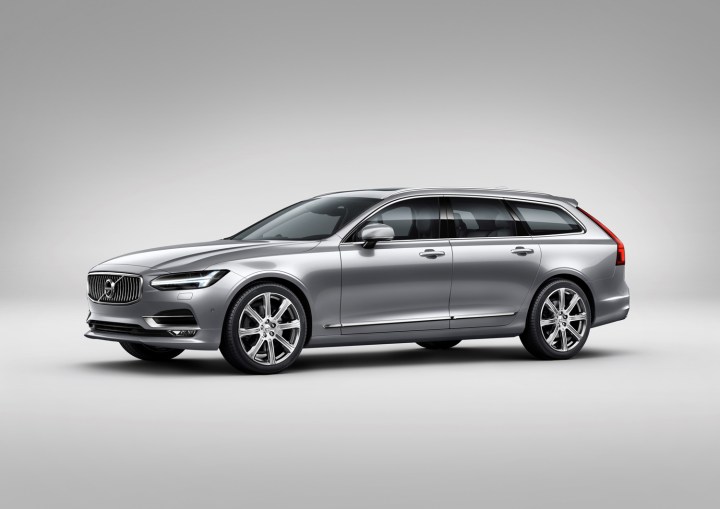
Polestar will become an in-house performance division. That means it will be to Volvo what Mercedes-AMG is to Mercedes-Benz, and what BMW M is to BMW. Polestar-badged models will be positioned near the top of the company’s lineup, though they’ll undoubtedly sit a rung below the ultra-luxurious Excellence-branded cars.
Volvo has previously made it crystal clear that it’s done building six- and eight-cylinder engines for good, so it wouldn’t make sense for Polestar to stuff a twin-turbocharged, 4.0-liter V8 under the hood of the new V90 station wagon (pictured). Instead, the tuner plans to build cars capable of keeping up with AMG- and M-badged machines by harnessing the power of electrification. It’s not too far-fetched to assume engineers will start with Volvo’s T8 drivetrain, which pairs a four-cylinder engine that’s both turbocharged and supercharged with a powerful electric motor.
Polestar will build faster versions of existing Volvo cars, but it’s not interested in building a stand-alone, race-ready model like the Mercedes-AMG GT and the Porsche 911.
“In the end we are Volvo and we go our own way. Copycat does not make any sense. We’re not going to make the ultimate racing car; we want to make performance cars that are usable day in and day out, and that’s what Polestar reflects,” explained Lex Kerssemakers, the head of Volvo’s North American division, in an interview with Australian website Motoring.
As of writing Volvo sells one full-blown Polestar-tuned model — the S60 — and a handful of Polestar parts typically bundled in a performance package. Managers are busily integrating Polestar into Volvo, and we expect that at least one additional Polestar-tuned model will make its debut next year.
Editors' Recommendations
- 2024 Polestar 2 gets a major overhaul for the 2024 model year
- Polestar 1 first drive review: Grand touring with a compromise



